My Romanian National Identity
Infinity Column
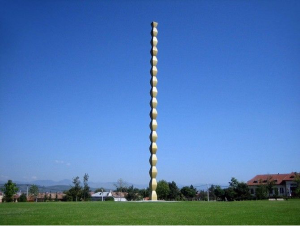
The Endless Column, built by Constantin Brancusi in 1938, is one of the most remarkable artworks from Romania. With perfection defined by harmony in dimensions and sides’ ratios, the monument symbolizes prosperity and creativity. It was built in honor of the courageous acts of the World War I heroes from Targu Jiu. I am proud of my nation’s glorious past and grateful for the historical treasures left as a legacy for future generations. This ascensional emblem, which captures terrestrial energies and emits them in the exterior world, showed me that the impossible is just a challenge that can be overcome and encouraged me to reach high with my dreams and aspirations. A real inspiration for creation, the Infinity Column taught me to rediscover myself and to integrate wisdom, science, and harmony in my life.
Coat of Arms of Romania – The Eagle
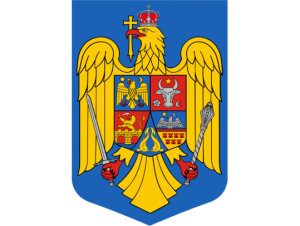
The golden Aquila holding a cross in its peak, a symbol on the coat of arms of Romania, is a central element that illustrates the founding dynasty and evokes the country’s history. The coat of arms keeps the tradition alive, and its meaning awakens the national feeling within me.
For me, the eagle or the “king of birds” represents power, identity, sovereignty, and nobility. On top of that, it is the image of pride, authority, and justice, which imposes it as a value of national representation. Moreover, it is an emblem of freedom through high flight, light, fire, and water as elements of power.
From the eagle, I learned to be strong. It is a dignified portrayal that helps me overcome difficulties and always be reborn with great power of character.
Merry Cemetery
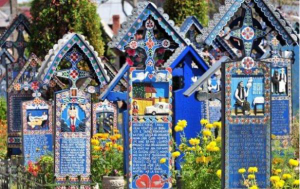
The Merry Cemetery is located in the northern part of Romania, in the heart of Maramures, in Sapanta village. It is the place where, contrary to the traditional Romanian culture, death is not treated with sadness and mourning, but rather with happiness and joy. The cemetery is famous for the brightly colored tomb crosses and paintings depicting the buried people’s occupations, but also humorous verses about their lives. The idea for the Merry Cemetery belonged to Stan Ioan Patras, sculptor, poet, and painter from 1938, and then it was transformed into a local tradition.
Spiritually speaking, the tradition in Sapanta in which the concept of life after death implies a particular faith made me approach life differently. This had a substantial impact on my character, shaping my identity and giving me the strength to see the good in every situation around me.
Palace of the Parliament
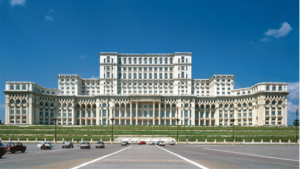
The most expensive and biggest civil, administrative building, the Palace of the Parliament, is located in Bucharest, Romania’s national capital.
The Palace of the Parliament was built by Nicolae Ceausescu, the ruler from that time, in a period of significant economic deprivation. Although the building was intended to glorify socialism, communism, and totalitarianism, 31 years later, after the Romanian Revolution from 1989, it represents democracy through the hosted institutions (Chamber of Deputies, Senate, Legislative Council, Constitutional Court).
So-called “the megalomaniac’s last greeting to his people,” the Palace of the Parliament, spreading over 330,000 square meters, is one of the biggest buildings in the world, holding the title of the heaviest construction in the Guinness World Records.
This building is impressive through every single detail of the inside rooms, but also through its exterior appearance. The imagination and vision the architects had when creating this edifice are a tribute to the Romanian nation.
The Sphinx

The Bucegi Plateau hosts one of Romania’s most impressive natural monuments, the Sphinx, located at 2216 meters altitude in the Bucegi Mountains. The name comes from the formation’s shape that resembles the human face, resulting from wind erosion over a long period of time.
The Sphinx was born during the Dacian time, and researchers say it might be our oldest sacred location. The Bucegi Plateau was the meeting place of those who worshiped the god Zalmoxis by bringing offerings.
It is a pilgrimage place for tourists on November 28, when the “energy pyramid” effect occurs. Due to the sun’s rays, a so-called pyramid that is believed to emit positive energy forms above the Sphinx.
The legend says that there is a time tunnel between The Sphinx in Bucegi and the one from Egypt, but so far, no one has been able to prove this fact.
Peles Castle
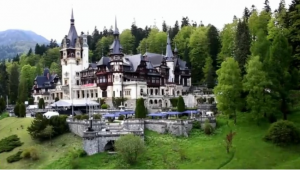
Peles Castle in Sinaia, the summer residence of Romania’s royal family, was built in 1883 at the request of King Carol I of Romania. It is one of the most important buildings in Romania and Europe, having a unique character through its historical and artistic value. The castle hosted many personalities, writers, musicians, but also kings and queens, leaving valuable documents and materials from that time as testimony.
“Peles Castle, an authentic royal crown, is a symbol of the independence and power of our country, of the Romanians’ trust and love, and its value lies in Romania’s own merits.” (King Mihai I, 2011)
The Dacian Circular Calendar – The Sanctuary
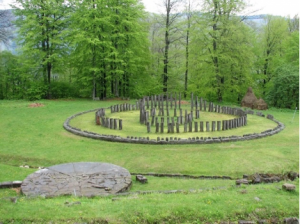
It is believed that the oldest astronomical construction in Romania could be the Sanctuary situated in the Dacian capital Sarmizegetusa Regia, located in the Orastie Mountains, at an altitude of 1200 meters. This archeological complex was built in III-II centuries BCE. Historians see in this monument a religious sanctuary and a Dacian calendar.
The Dacian calendar was based on a 13 years cycle, and the average year was 365.23 days. This calendar stopped being used after the capital of Dacia was conquered and destroyed in 106 CE and was replaced by the Julian Calendar, used in the entire Roman Empire. It is believed that the Martisor holiday, which celebrates the beginning of the spring, was the beginning of the new year for the Dacians.
The Great Circular Sanctuary of Sarmizegetusa Regia is not only the pattern of a calendar, but it also incorporates numerous meanings about the passage of time, about the macrocosm and microcosm unity.
This place is considered a “testament” with an indisputable value left by our Dacian ancestors.
Transfagarasan Road

Transfagarasan Road has been called many times “the most beautiful road in the world.” The fascinating road built over the Fagaras mountain group is one of the biggest attractions in Romania, attracting tourists from all over the world.
Located in the mountains that host the highest peak in the country – Moldoveanu with an altitude of 2544 meters – Tansfagarasan unites Muntenia and Ardeal with its wining curves. It forms a unique landscape in which nature can be captured in the most spectacular images. The place where the road reaches maximum altitude is Belea Lake, where tourists can spend the night in an ice igloo, open only three months per year.
This road awakened the spirit of adventure within myself and the curiosity the explore the furthest away places on Earth. This is how my passion for nature and traveling was born.
Romanian Traditional Clothing – “Ia”
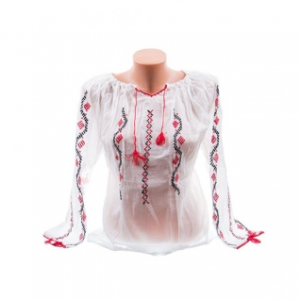
Ia is a blouse, a component of the traditional Romanian clothing, and it has its origin in the Dacian folk costume. It is handmade of white cotton cloth, adorned with Romanian folk designs and sometimes with beads. Through embroidered motifs and symbols, ia expresses the feeling of belonging to a community, to a region, but it also marks important celebrations.
The Romanian port has two essential characteristics – its unity and continuity. The continuity symbolizes the path traveled by the folk costume born in the heart of the Dacian civilization, until today. By looking at the essential aspects which ia represents and are seen in the regional port throughout the country, we get a sense of harmonious unity.
The traditional ia has inspired many artistic figures and has appeared, over time, in paintings, but also in great Romanians and international fashion designers’ collections.
Every year, on June 24, we are brought together by the attraction for national belonging, celebrating the national day of the ia by wearing with pleasure our traditional port.
Traditional Romanian Cuisine

The Romanian gastronomy belongs to our culture and mirrors through each dish the country’s fascinating history. Among the traditional food, there are found pies, jams, and homemade sweets.
Transylvania pride itself on its drinks – more precisely, the alcoholic beverage named tuica, stronger than in other regions of the country. It is prepared from fruits such as plums, peaches, or apricots that are left to ferment.
Sarma is a dish based on minced chicken, pork, lamb, or beef, mixed with various spices and rise, then wrapped sauerkraut, stevia, grape leaves, spinach, or even horseradish. My grandmother respects the tradition and cooks the sarma in a clay pot, on the bottom of which she places pepper and thyme leaves. The sarma is served with sour cream on top and polenta on the side. I could say it is one of my favorite dishes.
Traian Vuia – a legacy in the aeronautical science field
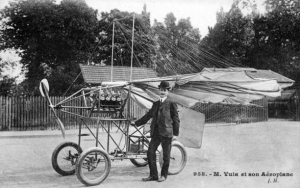
Traian Vuia, a famous inventor and builder of airplanes and engines, pioneer of Romanian and world aviation, was born on August 17, 1872, in Surducul Mic, Timis county.
On March 18, 1906, the airplane “Vuia no. 1”, piloted by its inventor and builder, performed the first flight in the world. The aircraft detached from the ground and flew through its own means, without any other auxiliary installation connected to the ground. “Vuia no. 1” flew a distance of approximately 12 meters, at the height of 60 centimeters above the ground. Passionate about mathematics, physics, and technology, Traian Vuia proved that a device heavier than air could lift and fly on its own without any exterior help.
In my hometown Timisoara, the international airport was named after Traian Vuia in 2003. A strong sense of pride awakens in me for the Romanian national values such as scientific discoveries that facilitate the entire world.
Romanian Modern Art
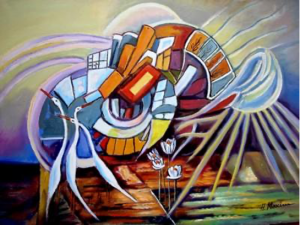
The artworks from the XIX-XX centuries illustrate an accentuated modernism, with paintings full of energy and color. The attraction to cubism and constructivism artistic currents was marked by many Romanian artist representatives such as Max Herman Maxy (1895 – 1971) and Alexandru Ciucurencu (1903 – 1977). Their work is directed towards the geometrization of the elements, emphasizing the chromatic expressiveness in a simplified form.
This stage emphasizes compositional balance through the combination of mathematical logic with pastel geometric shapes, a sign of creative evolution in the painted art.
The Egyptian National Identity
The Great Pyramid of Giza
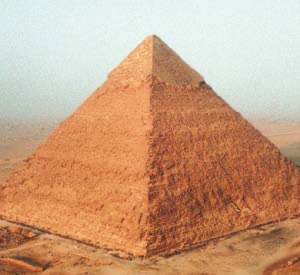
The Great Pyramid of Giza was built over 4,500 years ago, around the year 2550 BCE, and its construction represents a mystery to this day. It is an emblem of Egypt and a symbol of an edifice that tends to perfection, capable of conveying the glory of the past. Powerful force through its energy, leading to inspiration and desire, by seeing the Pyramid of Cheops, I understood that I am in a strong spiritual and ancestral connection with my surroundings. As the pyramid is a testimony of superior knowledge throughout time, the fusion of all the sciences and employed techniques could be a message for future generations – a challenge of self-transcendence.
Coat of Arms of Egypt – The Eagle of Saladin
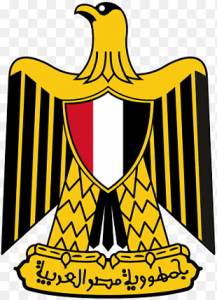
The Eagle of Saladin, an iconic figure for Egyptians, is part of the coat of arms of Egypt. It has a close relationship with the culture of the gods’ world. In Ancient Egypt, religion saw the eagle as a winged force that would bring the spirit back to life. The bird was the form in which the part of the soul that was released after death returned to the world of the living. This was also the emblem of Horus, the god of the sky. From this symbolism, I like to take the courage and determination of starting over when life does not go as planned.
The Book of the Dead

Written 3,500 years ago, Papyrus of Any (which included the Egyptian Book of the Dead) is the most complete, artistically decorated, and, at the same time, the best-preserved document of the philosophical and religious knowledge in Ancient Egypt.
These texts, usually written on papyri, are part of the rituals in which the body of the deceased is prepared such that the soul is ready for the afterlife journey.
In the perspective of the ideal Egyptian thinking based on a science of secrets, and with the help of magical spells, death and what happens after could be controlled. The threshold between life and death could be crossed to survive in another dimension.
Fascinated by the fantastic universe that the Egyptians see beyond appearances, with full faith in the conceptualization of the soul beyond death, the Egyptian rituals have left their mark on my spiritual life.
Aswan High Dem

One of the most impressive and important engineering works is the Aswan High Dam, ranking 3rd place in the world’s top dams, both due to its size, but also through the utility it offers. The dam, at its maximum capacity, produces half of Egypt’s total energy.
Aswan is an embankment dam built for the main purpose of avoiding the annual floods caused by the Nile River in the Aswan area. Additionally, some of the stored water is used for irrigation, and the builders took the opportunity to produce electricity through a hydroelectric power plant. For Egypt, it is a symbol of pride and power.
The Sphinx
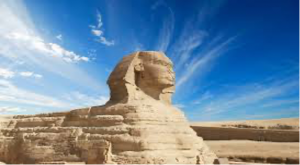
The Sphinx of Giza, situated near the pyramids, is one of the world’s greatest monuments. The Egyptian Sphinx is a mystical creature created from the combination of the head – in other words, the intelligence – of the ruling kind, and the powerful body of a lion – associated with the symbol of Sun. The statue was built on the site of an old quarry, and it seems that it was carved from only one piece of stone, which ensured its resistance over time.
The monument is today a symbol of both Ancient and Modern Egypt. The Sphinx has been and will always remain a source of inspiration for the construction of later edifices.
Valley of the Kings
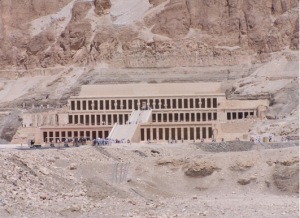
The Valley of the Kings is a valley in Egypt located on the west bank of the Nile, where over a period of almost 500 years (16th century BCE – 11th century BCE), tombs for the pharaohs and nobles of the New Kingdom were built. Most burial chambers were decorated with religious texts, images, and objects that ensured the deceased a comfortable existence in the afterlife.
Being a constant source of inspiration, some people have named the Valley of the Kings, the biggest open-air museum in the world. Immense sculptures, temples, and pyramids remain from the time when Egypt was the largest civilization on Earth. Under the ruling of the pharaohs, powerful leaders considered gods, Egypt prospered, leaving behind treasures that have impressed generations.
With sand-covered tombs, austere pyramids, and pharaonic temples, the Valley of the Kings awakens the desire for knowledge and exploring.
The Egyptian Calendar
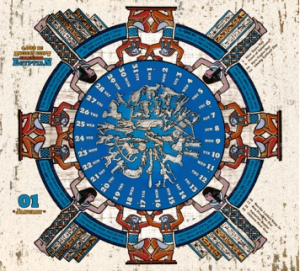
The ancient Egyptians were the first to measure the year with some accuracy by inventing two calendars. One of them was a monthly calendar, which was used mainly for organizing religious festivals. The other one was a solar calendar, which was used for administrative purposes and in the ancient Egyptians’ daily lives. It is the first calendar to have 365 days in a year, and it is the forerunner of the Gregorian calendar used today.
The Egyptians studied the stars as early as the fifth millennium BCE. The sky was divided into 36 decans (small constellations), and each of them rose annually at sunset for a period of 10 days in a specific area of the sky. Based on these constellations, the year was divided into 12 months, 30 days each, leaving five days at the end of the year for celebrations.
The Egyptian calendar was the first solar calendar in history and was based on the seasonal year. The three seasons each lasted four months. The beginning of the year was marked by the Nile’s overflow, as the life of the Egyptians was greatly influenced by it.
Ancient Egypt is the birthplace of the “modern clock.”
The Suez Canal
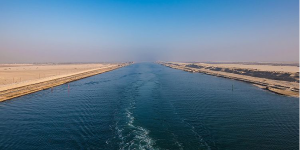
The Suez Canal, west of the Sinai Peninsula, connects the Mediterranean Sea to the Red Sea and is 163 kilometers long and 300 meters wide at its narrowest point.
The Egyptians built it for international trading purposes. The idea of connecting the two seas dates back to Ancient Egypt when a Pharaoh’s Canal between the Nile River and the Mediterranean Sea was constructed. Over time, the canal underwent numerous expansions, and it became a maritime link between Europe and Asia. This route made it possible to avoid the need to bypass the entire continent of Africa and also experienced several wars and years of inactivity.
The Suez Canal’s economic zone is of great importance, as the Egyptian state wanted the surroundings of the waterway to be more than a transit area and contribute to the country’s economic development.
This canal is a miracle of the nineteenth century, belonging to the aspiration of humanity.
Clothing in Ancient Egypt – Kalasiris
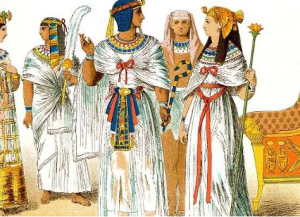
Kalasiris was worn in Ancient Egypt by women and had the length of a dress. Most of the time, these tunics were white and made of linen, accompanied by a belt around the waist. The clothes were also adorned with beads for decorative purposes. The jewelry was a clothing accessory and was considered to have magical powers. All religious symbols were inlaid in gold or clay. Most of the times, the gods depicted on jewelry were Horus (his eyes symbolized eternity) and Ra (deity of the sun).
These simple but stunning outfits offered women elegance and sensuality, defining their personality.
Egyptian Food

The Egyptian diet was mainly vegetarian. The meat could not be stored for long periods of time because the Egyptians did not have a refrigerator, so it was eaten shortly after the animals were sacrificed. Their food was mainly based on bread and beer. Beer was the most popular drink, being consumed at every meal of the day as it was considered to be healthier than the water of the Nile River. The workers’ wages were, in fact, a combination of beer and bread. However, vegetables and fruits accounted for most of the Egyptian diet: lentils, leeks, garlic, olives, pomegranates, grapes, dates, and figs.
Among the traditional dishes that are believed to have been cooked since antiquity and that must be tried are Ful Medames (beans with oil and lemon juice, optionally with garlic or onion), the Egyptian version of hummus as a side of Ta’meya (Egyptian falafel), and Rozz Me’ammar (rice cooked in milk or butter with chicken).
Hieroglyphs
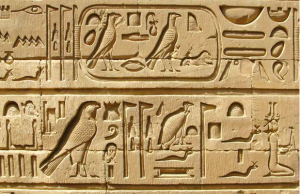
The hieroglyphic writing dates back to 3000 BCE and is composed of hundreds of symbols and images. A hieroglyph can represent a word or a sound, and the same character can serve different purposes in distinct contexts.
It was thought that the hieroglyphs were “the words of gods” and were mainly used by priests. They can be found written on graves, stones, scrolls of papyrus, and on artworks. It is such a unique writing system that people could not decrypt it for a long time. Over time, however, the secrets of this language have been discovered, and today we can fully translate the hieroglyphic writing.
Due to the Egyptians’ meticulousness in recording aspects, especially related to the reign of the pharaohs, we know exactly the name and period of time of no less than 33 dynasties. At the same time, we have access to numerous literary works, songs of praise, stories, and embalming techniques. Without these writings, ancient Egyptian culture could have been lost in time.
Egyptian Art

The Egyptian art dates back to the 31st century BCE and consists of paintings, sculptures, drawings on papyrus, jewelry, and architecture, all with religious meaning.
The ancient Egyptians’ connection with the protective gods was profound and manifested both on Earth and in the afterlife. The artists gave the colors specific religious meanings. Red was a negative color, being associated with Seth, the god of the desert. Green, the color of the vegetal life, joy, and youth, was Osiris’s color, the god of resurrection and immortality. Black had the same meaning; it was the color that depicted the fertile land of the Nile River, which, through its outflows, ensured the eternal “revival” of Egypt.
All the artworks can be found today in museums from all over the world. It was essential for Egyptian artists that their works lasted centuries, even millennia, without altering. As Thucydides said, Egyptian art is “an acquisition for eternity.”